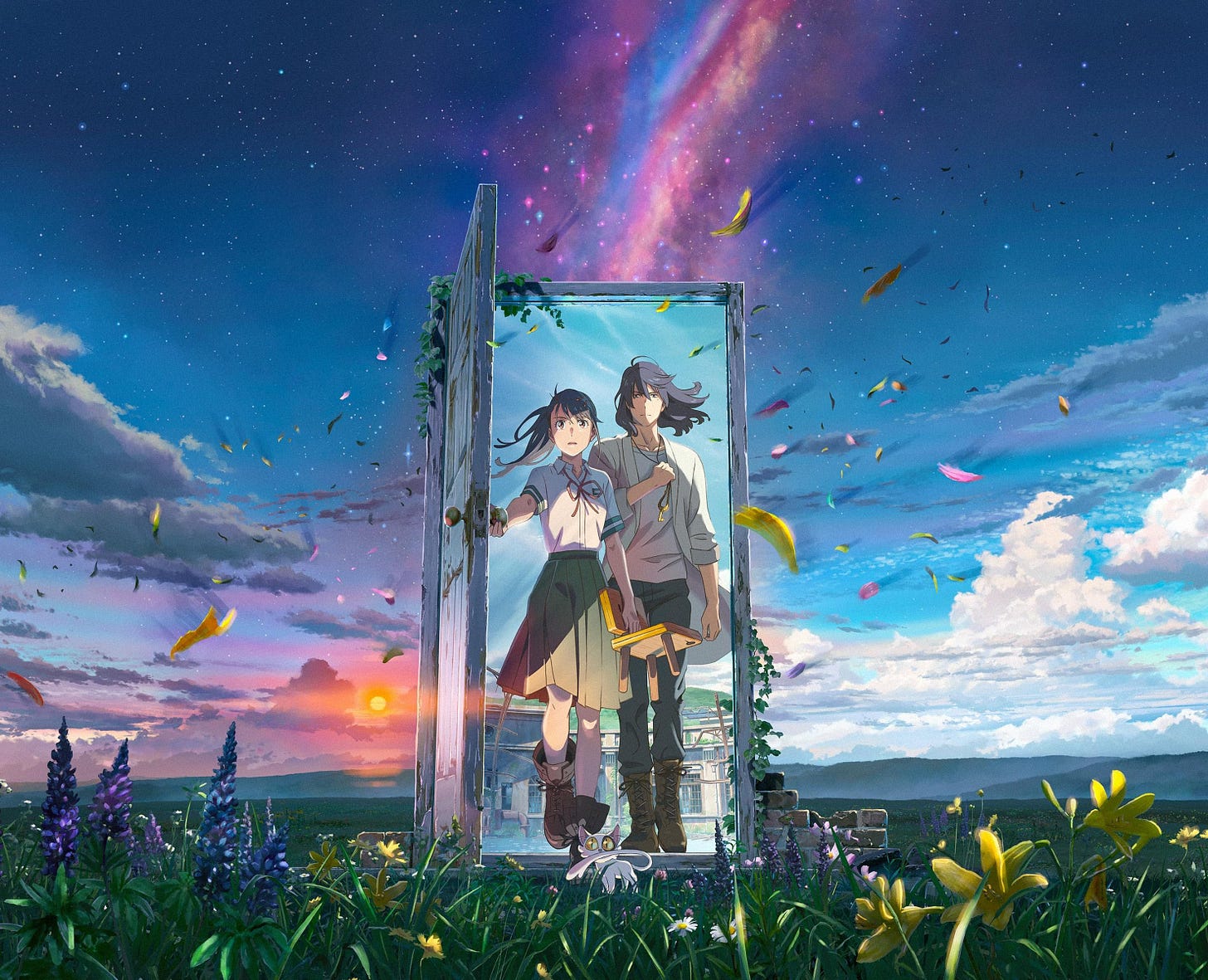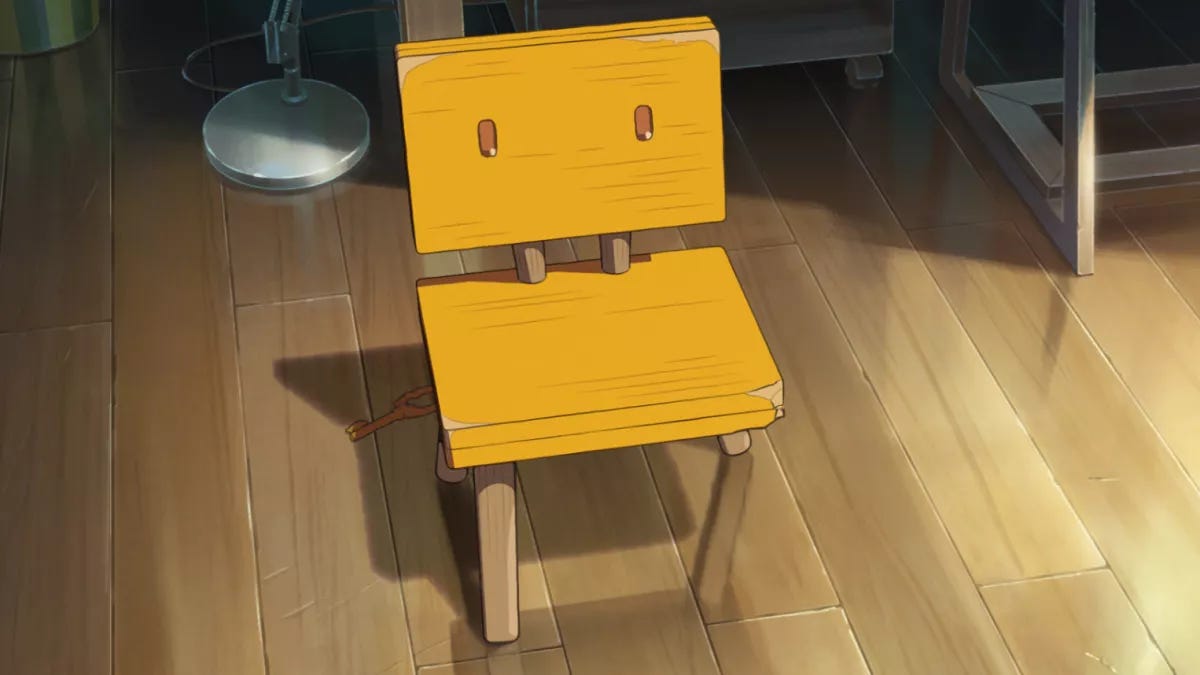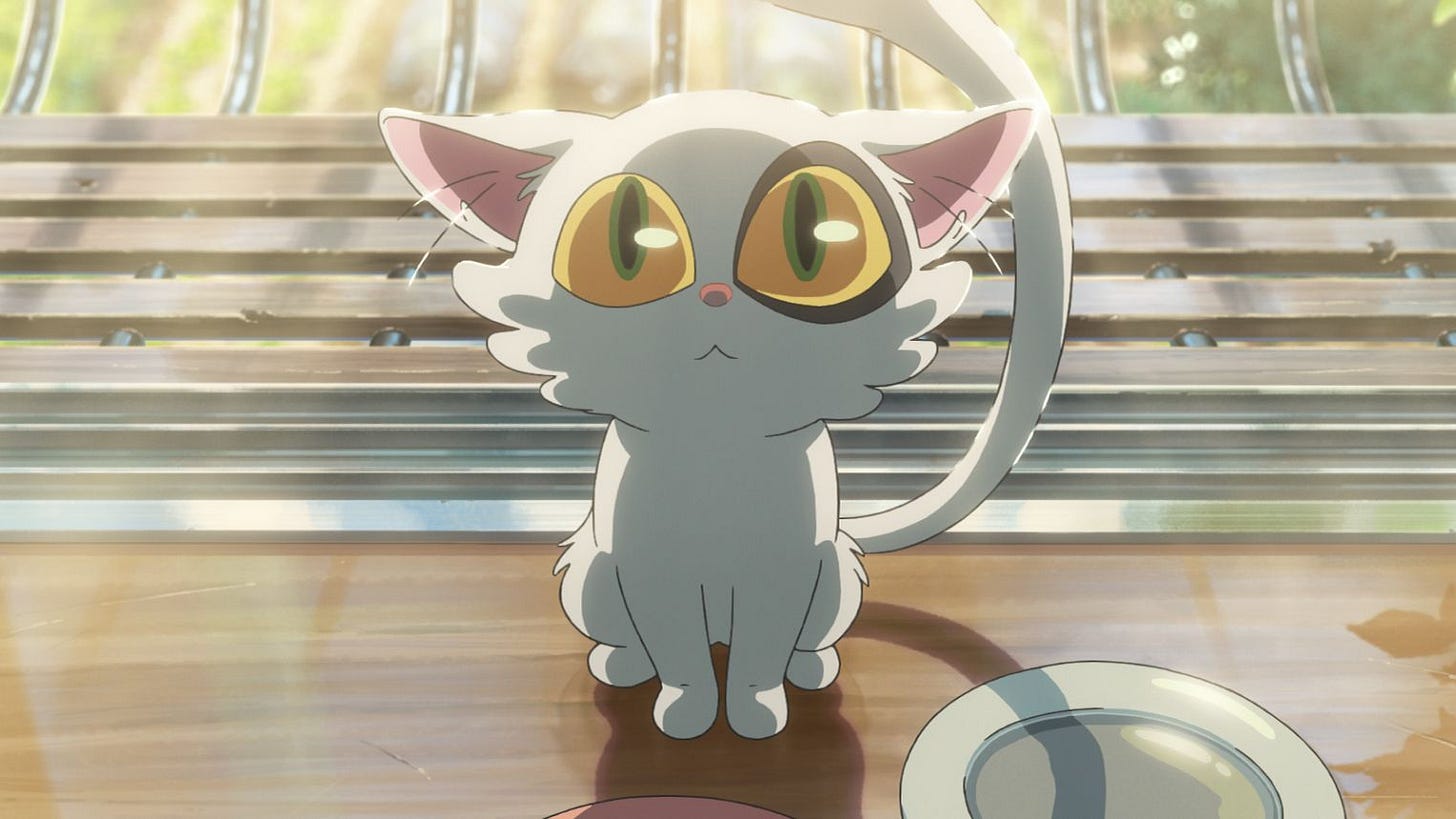Suzume: Closure Reimagined
The latest Makoto Shinkai film pays tribute to the places and lives lost during the 2011 Tōhoku disaster.
This review contains mild spoilers. Proceed with caution.
On her way to school one day, Suzume Iwato stumbles upon Souta Munakata, a young man searching for abandoned areas. The high school girl directs Souta to a nearby ruin, but out of pure curiosity, she herself decides to head to the same destination.
Once there, Suzume discovers an isolated door with a dreamlike universe lying beyond it - a place that she can see and feel, but not enter. A strange stone rests on the ground nearby, but it turns into a cat-like creature and scurries away when Suzume lifts it. Suddenly afraid, she heads back toward her school, not realizing that her act of leaving the door open will have consequences.
With the "keystone" released, the evil within the other universe can now freely escape and wreak havoc throughout Japan. Intending to correct her dangerous mistake, Suzume joins Souta - whose true goal is to prevent evil from festering - in finding and locking all open doors before the country is destroyed.
[Written by MAL Rewrite]
Notable VAs
Hanazawa Kana (Angel Beats!, Quintessential Quintuplets) as Iwato Tsubame (Suzume’s mother)
Kamiki Ryunosuke (Your Name.) as Serizawa Tomoya
After spending his last two films using disaster as a metaphor to reference the 2011 Tōhoku earthquake and tsunami, Shinkai is more direct in his approach as he uses mythos to characterize the long-lasting impact the disaster has had on Japan. In an interview on an episode of the Ghibliotheque podcast, Shinkai answers some questions about the film and the creative process that went into it. One question was about the three-legged chair, a constant yet unexpected source of humor throughout the movie. Because Suzume’s subject matter is more serious than his previous films, Shinkai thought it was appropriate to add a more lighthearted character to break up some of the tension. And it worked. My theater was full of laughs as Souta made unbelievable leaps and bounds chasing after Daijin, the mischievous white cat that turned him into a child’s chair in the first place. Shinkai also revealed that the chair’s movement was inspired by Luxo Jr., Pixar’s signature jumping lamp, and its yellow color was inspired by Pikachu and the idea that yellow mascots typically garner favorable attention.
Between Your Name., Weathering With You, and Suzume, this movie probably contains the most humor. When I saw Weathering with You in theaters more than three years ago, I don’t remember my theater being as loud as it was during Suzume. Most of the laughter came from the road tripping scenes in the second half of the movie when Serizawa, Suzume, and Tamaki drove north to visit the remains of Suzume’s childhood home. And speaking of road trip, after I walked out of the theater, one of the things I was dwelling on as I waited for my Uber ride home was how Shinkai depicted the road journey. Part of Shinkai’s inspiration to write Suzume as a road trip was because of the COVID-19 pandemic and his desire to travel again without fear of viral infection. The other part comes from several promises he’s made in the past when speaking about his work in cities across Japan. People would always encourage Shinkai to make the setting of his next film their hometown, so a road trip was the perfect solution to check off all these boxes at once.
When I think about road trip as a genre, the first movies that come to mind are Nomadland (2020) and Thelma and Louise (1991). The genre is a staple of American filmmaking simply because of how large the country is. I haven’t been to Japan (yet), but I think Shinkai captures the spirit of the Japanese countryside really well. Suzume’s adventure starts in the southern island of Kyushu and slowly works its way up north to the Tōhoku region. Along the way, we pass through Ehime prefecture and the cities of Kobe and Tokyo. Throughout her journey, Suzume encounters some kind-hearted people who don’t necessarily know why she’s acting so strangely, but they help her out nonetheless. Generally speaking, Japan is a safe and hospitable country, so even though Suzume is by all accounts a runaway child it was nice to see the good in strangers.
As you’d expect from any Shinkai film, the way light and colors are used in Suzume is on-par with his previous work. The sunsets paired with the beautiful colors of the cosmos made for a visually stunning combo that can only be appreciated on the big screen. I beg you to watch this film in theaters if you have the chance because any other format is doing yourself a disservice. If I had to rank them in order, I’d say the visuals go something like Your Name. > Weathering With You = Suzume.
As for the score and OST, I think Suzume is better than Weathering With You but not as good as Your Name. In the Ghibliotheque podcast episode, Shinkai stated how Your Name. being a hit was sort of a blessing and curse. With his work gaining international attention, he felt like he was pressured into coming up with films that could match or even surpass Your Name. Shinkai believes he’s reached his peak, and if he hasn’t he’s quickly approaching it. I can appreciate this level of self-awareness since most of the criticism I’ve seen about Suzume so far has been centered around the story beats and how formulaic it felt, especially after Weathering With You which had similar critiques.
I only have two major complaints for Suzume. The first is about Tamaki’s relationship with Suzume. We see the two of them get into a fight over Suzume’s rashness and her sudden desire to visit her old home, which is followed by Tamaki apologizing for her words but not taking them back. My problem lies in the build up to this storyline, and it’s mostly due in part to them being geographically distant from each other. Tamaki and Suzume exchange frustrating texts and phone calls, but I never really got the sense that Suzume felt like she was suffocating living under Tamaki. What I’m trying to say is the idea was good, but the execution was poor.
The second complaint is about the intentions of Daijin and Sadaijin. I get that they’re supposed to play the role of mischievous gods, but when Daijin taunts Suzume and is ecstatic over the fact that millions of people would die and subsequently asks to be her cat didn’t make much sense to me. And then it reverts back to becoming a keystone after it rescues Souta? It’s just really confusing, even more so when Sadaijin makes appearance after we find out that it possessed Tamaki.
Suzume gets 8 three-legged chairs out of 10. It’s always going to be difficult for someone to exceed their magnum opus; in this case, it’s Your Name. for Makoto Shinkai. But I think what he did here was beautifully done, and I liked how it was thematically different from his previous films. If you understand the historical context of Suzume before going into it, I think you’ll come out of the theater appreciating it a lot more than if you didn’t do the research ahead of time.
I leave with you with this TikTok that popped up on my For You page, which perfectly summarizes about half of the movie in a matter of seconds.
https://www.tiktok.com/t/ZTR3Gjr1K
If you made it this far, consider sharing this review with someone who also watched the film! I’d love to hear others’ opinions on it! How would you rank Shinkai’s last three films? Was Suzume what you expected or something completely different?
If you’re a fan of anime content, I post reviews of everything I watch on a sporadic basis, so make sure to subscribe to receive emails for whenever I make a new blog post!
Until next time!







